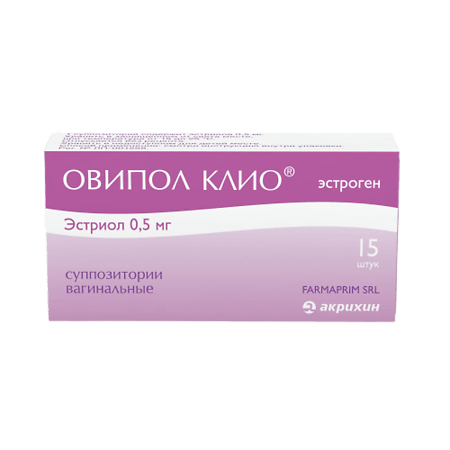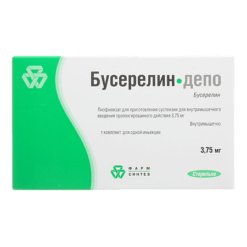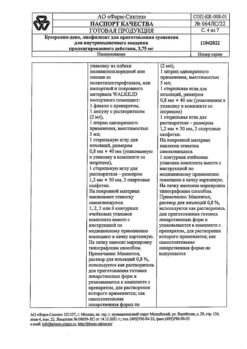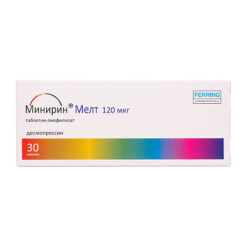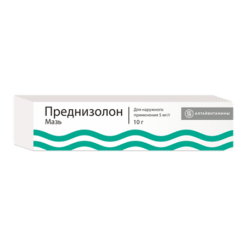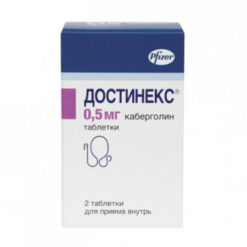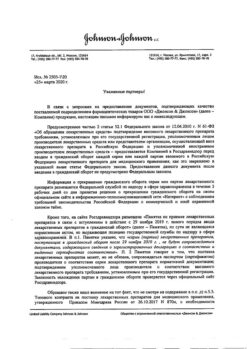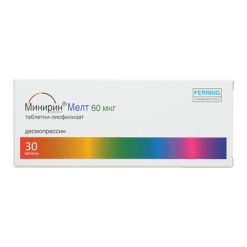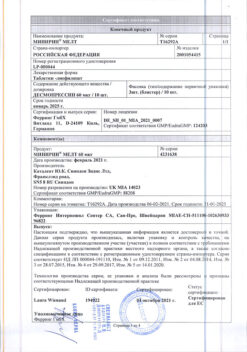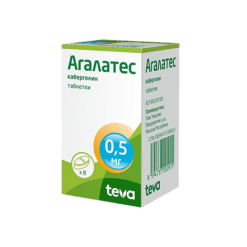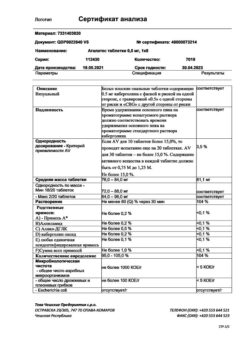No products in the cart.
Ovipol Clio, vaginal suppositories 0.5 mg 15 pcs
€20.56 €17.14
Description
Estrogen synthesized in the human body. Getting into the bloodstream it forms a complex with specific receptors (in uterus, vagina, urethra, breast, liver, hypothalamus, pituitary gland), stimulates the synthesis of DNA and proteins. It has a selective effect, mainly on the cervix, vagina, vulva, causes increased proliferation of vaginal and cervical epithelium, stimulates its blood supply, helps to restore the epithelium in its atrophic changes in the periods of premenopause and menopause, normalizes the pH of the vaginal environment, vaginal microflora, increases the resistance of its epithelium to infectious and inflammatory processes, affects the quality and quantity of cervical mucus. The effect on the endometrium is insignificant (minor risk of uterine bleeding).
It has a hypolipidemic effect, slightly increases the concentration of beta-lipoproteins in the blood, increases the sensitivity to insulin, improves glucose utilization, stimulates the production of liver globulins that bind sex hormones, renin, HDL and clotting factors. Due to participation in the realization of positive and negative feedback in the hypothalamic-pituitary-ovarian system, estriol is able to cause moderately pronounced central effects; it stimulates parasympathic-mimetic reactions.
Pharmacokinetics
Absorption is high. Time to reach Cmax in blood plasma with intravaginal administration is 1-2 hours. Binding with plasma albumin is 90%.
The excretion is mainly by the kidneys as metabolites (a few hours after intake and lasts up to 18 hours), 2% is excreted unchanged in the intestine.
Indications
Indications
hormone replacement therapy: atrophy of the mucous membrane of the lower parts of the urogenital tract associated with estrogen deficiency;
pre- and postoperative therapy in postmenopausal women who are about to undergo or have undergone surgery via vaginal access;
for diagnostic purposes with unclear results of a vaginal smear against the background of atrophic changes.
Pharmacological effect
Pharmacological effect
Pharmacological action
Pharmacological action – estrogenic.
Pharmacodynamics
The drug Ovipol Clio® contains estriol, an analogue of the natural female hormone. It replenishes estrogen deficiency in postmenopausal women and reduces postmenopausal symptoms. Estriol is most effective in the treatment of genitourinary disorders. In case of atrophy of the mucous membrane of the lower parts of the genitourinary tract, estriol helps to normalize the epithelium of the genitourinary tract and restore normal microflora and physiological pH in the vagina. As a result, the resistance of the epithelium of the urinary and genital tract to infection and inflammation increases, dryness of the mucous membrane and itching in the vagina, pain during sexual intercourse, the likelihood of vaginal infections and urinary tract infections are reduced, it helps to normalize urination and prevents urinary incontinence. Unlike other estrogens, estriol has a short period of action, since it is retained in the nuclei of endometrial cells for a short period of time. It is assumed that a single daily dose does not cause endometrial proliferation. Therefore, cyclic administration of progestogen is not required and withdrawal bleeding does not occur. In addition, estriol has not been shown to increase mammographic density.
Pharmacokinetics
Absorption. Intravaginal administration of estriol ensures optimal bioavailability at the site of action. Estriol is also absorbed and enters the general bloodstream, which is manifested by a rapid increase in the concentration of unbound estriol in plasma. Cmax in plasma is observed 1–2 hours after administration.
Distribution. In plasma, 90% of estriol is bound to albumin and, unlike other estrogens, is practically not associated with SHBG.
Metabolism. The metabolism of estriol consists mainly of a transition to a conjugated and unconjugated state during the enterohepatic circulation.
Excretion. Estriol, being the end product of metabolism, is mainly excreted by the kidneys in bound form. Only a small portion (±2%) is excreted through the intestine, mainly as unbound estriol. T1/2 is approximately 6–9 hours.
Special instructions
Special instructions
You must carefully read the instructions for use before you start using this drug, because they contain important information for the patient, and also save the instructions – they may be needed again.
If the patient has any questions, they should consult a doctor.
This drug is intended for the patient personally and should not be shared with others as it may cause harm to them even if they have the same symptoms as the patient.
With long-term treatment with estrogen, systematic medical examinations are indicated. Before starting treatment and every 6 months of treatment, a thorough general medical and gynecological examination, including examination of the mammary glands, should be performed.
HRT in the treatment of menopausal symptoms is recommended to be started only if they adversely affect the patient’s quality of life. In all other cases, it is necessary to compare the balance of benefit and risk. At a younger age, the benefit-risk ratio is more favorable than in older women. During treatment, it is necessary to inform the doctor about cases of vaginal bleeding, changes in the mammary glands, the appearance of jaundice, as well as signs of thromboembolism (for example, painful swelling of the extremities, sudden chest pain, shortness of breath). In all cases, patients require a thorough examination.
Reasons for immediate discontinuation of therapy: jaundice or impaired liver function, increased blood pressure, resumption of migraine-type headaches, phlebitis.
Tumors
With long-term estrogen monotherapy, the risk of developing endometrial hyperplasia or cancer increases, which is directly proportional to the dose of the drug and the duration of therapy.
The risk of developing breast cancer depends on the duration of HRT, but after a few years (most often 5 years) after stopping therapy it returns to normal. During HRT, the density of breast tissue may increase, which complicates its radiological examination.
Long-term estrogen therapy (5-10 years) is also associated with an increased risk of ovarian cancer.
Benign or malignant liver tumors have been observed in rare cases during the use of sex hormones. In some cases, these tumors have led to the development of life-threatening intra-abdominal bleeding. If pain appears in the upper abdomen, liver enlargement, or signs of intra-abdominal bleeding, the presence of a liver tumor should be taken into account in the differential diagnosis.
Cardiovascular diseases
HRT is associated with a 1.3- to 3-fold increase in the risk of developing VTE and is most likely to occur during the first year of drug use than at a later date. All risk factors for the development of VTE should be taken into account and when prescribing the drug before surgery, it is necessary to prevent VTE, as well as temporarily discontinue HRT 4-6 weeks before surgery and resume treatment only after the woman begins to walk.
The risk of developing ischemic stroke increases especially in old age (see “Contraindications”).
In the absence of a history of VTE, but in the presence of thrombosis at a young age in close relatives, it is recommended to conduct a screening examination for the presence of thrombophilic disorders. If a thrombophilic defect is detected that is not identical to the disease in relatives, or the presence of a severe defect (for example, deficiency of antithrombin, protein S or protein C, or a combination of these defects), HRT is contraindicated (see “Contraindications”).
Women receiving anticoagulant treatment must weigh the benefits versus risks.
Estrogens can cause fluid retention. Patients with renal or heart failure should be under medical supervision while taking HRT.
Other states
Estrogens increase the lithogenicity of bile, which increases the susceptibility in some patients to the development of gallstone disease when using estrogens.
Estrogens are a weak gonadotropin antagonist and do not have significant effects on the endocrine system.
Cognitive function does not improve with HRT. Evidence has been obtained of an increased risk of developing dementia in women who began taking continuously combined HRT or estrogen monotherapy after 65 years of age.
If prolactinoma is detected, the patient should be under close medical supervision (including periodic assessment of prolactin concentration).
In women with hereditary factors for angioedema, exogenous estrogens may cause or worsen symptoms of angioedema.
Impact on the ability to drive vehicles and machinery. The drug does not affect the ability to drive or engage in other potentially hazardous activities that require increased concentration and speed of psychomotor reactions.
Active ingredient
Active ingredient
Estriol
Composition
Composition
Active ingredient:
estriol 0.5 mg;
Excipient:
semi-synthetic glycerides (such as “Suppotsir”) – 1999.5 mg
Pregnancy
Pregnancy
The use of the drug during pregnancy and breastfeeding is contraindicated.
Contraindications
Contraindications
established hypersensitivity to the active substance or any of the excipients of the drug;
known, known or suspected breast cancer;
diagnosed or suspected estrogen-dependent tumors (for example, endometrial cancer);
bleeding from the vagina of unknown etiology;
untreated endometrial hyperplasia;
hereditary or acquired predisposition to arterial or venous thrombosis (resistance to activated protein C, deficiency of protein C, protein S, antithrombin III, hyperhomocysteinemia, the presence of antibodies to phospholipids);
thrombosis (venous and arterial) and thromboembolism currently or in history (including deep vein thrombosis, pulmonary embolism, myocardial infarction, stroke), cerebrovascular disorders;
conditions preceding thrombosis (including transient ischemic attacks, angina), currently or in history;
liver disease in the acute stage or history, after which liver function tests have not returned to normal;
porphyria;
pregnancy;
breastfeeding period.
With caution:
leiomyoma or endometriosis;
risk factors for the development of thromboembolic complications;
risk factors for estrogen-dependent tumors, incl. a family history of breast cancer in 1st degree relatives;
arterial hypertension;
benign liver tumors (for example, liver adenoma);
diabetes mellitus with or without diabetic angiopathy;
cholelithiasis;
migraine or severe headache;
systemic lupus erythematosus;
epilepsy;
bronchial asthma;
familial hyperlipoproteinemia;
pancreatitis;
history of endometrial hyperplasia;
heart or kidney failure.
Side Effects
Side Effects
Itching and irritation at the injection site, tension and soreness of the mammary glands.
In combination with gestagens: benign and malignant estrogen-dependent tumors, incl. breast and endometrial cancer, VTE, incl. deep veins of the leg and pelvis, pulmonary veins, myocardial infarction, stroke, gallbladder disease, chloasma, erythema multiforme, erythema nodosum, hemorrhagic purpura, dementia when starting HRT in continuous use of the drug after 65 years, acyclic spotting, breakthrough bleeding, increased libido.
If the patient experiences or worsens the side effects indicated in the description, or the patient notices any other side effects not listed in the instructions, the doctor should be informed.
Interaction
Interaction
Inducers of microsomal oxidation (phenobarbital, carbamazepine, phenytoin, rifampicin, rifabutin, nevirapine, efavirenz) increase estrogen metabolism; powerful inhibitors (ritonavir, nelfinavir) significantly inhibit metabolism.
Preparations of St. John’s wort and perforatum can induce estrogen metabolism.
Estriol enhances the effect of lipid-lowering drugs.
Weakens the effects of male sex hormones, anticoagulants, antidepressants, diuretics, antihypertensives, hypoglycemic agents.
If the patient is using the above or other medications (including over-the-counter medications), you should consult your doctor before using Ovipol Clio®.
Overdose
Overdose
When administered intravaginally, overdose is unlikely.
Symptoms (if accidentally ingested): nausea, vomiting, withdrawal bleeding.
Treatment: symptomatic. There is no specific antidote.
Storage conditions
Storage conditions
In a place protected from light, at a temperature not exceeding 25 °C.
Keep out of the reach of children.
Shelf life
Shelf life
3 years
Do not use after the expiration date indicated on the package.
Manufacturer
Manufacturer
Pharmaprim, Moldova
Additional information
| Shelf life | 3 years |
|---|---|
| Conditions of storage | In a dry, light-protected place at 2-25 °C |
| Manufacturer | Pharmaprim, Moldova |
| Medication form | vaginal suppositories |
| Brand | Pharmaprim |
Related products
Buy Ovipol Clio, vaginal suppositories 0.5 mg 15 pcs with delivery to USA, UK, Europe and over 120 other countries.

